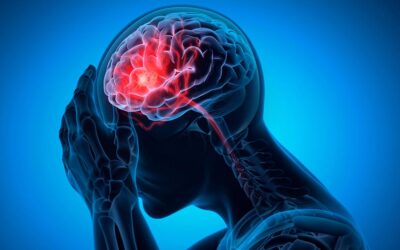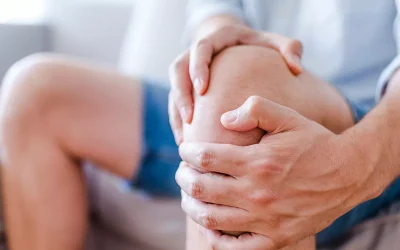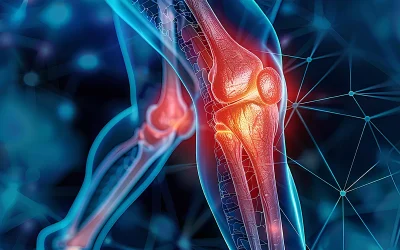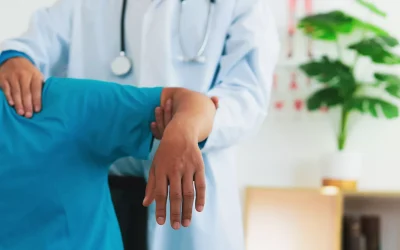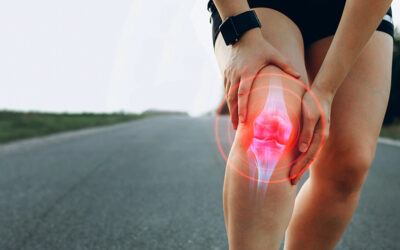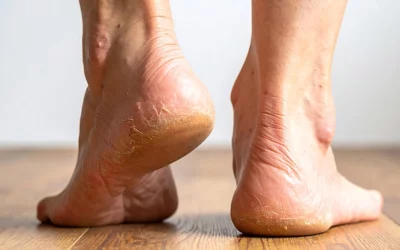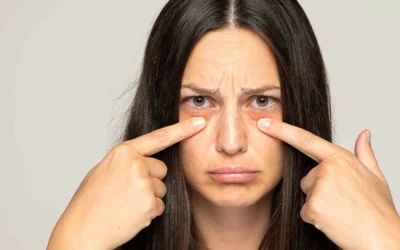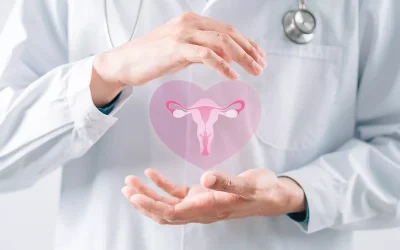World Spine Day 2025: Time To Stand Tall for Spine Health
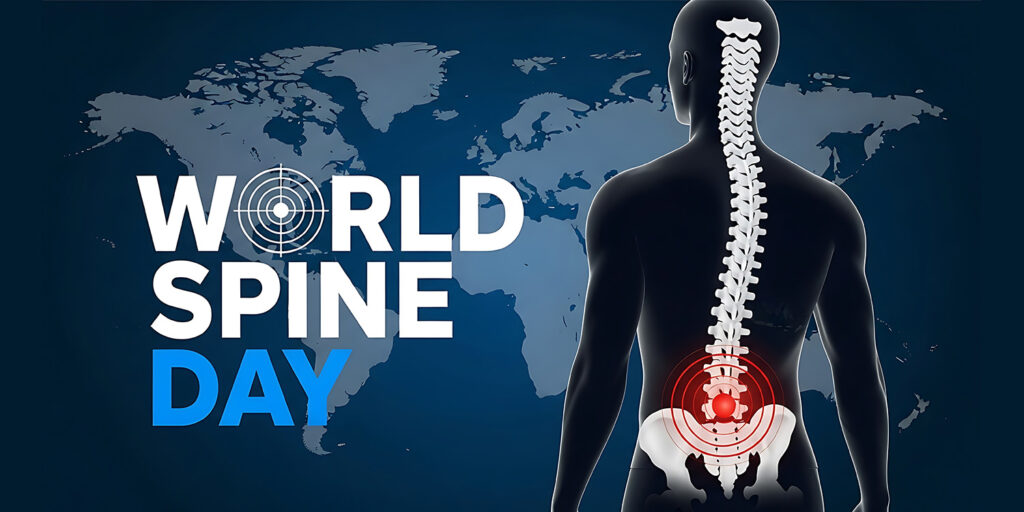
The spine, often called the backbone, plays a vital role in supporting movement, posture, and overall well-being. Unfortunately, spinal conditions such as low back pain, scoliosis, and slipped discs are among the leading causes of disability worldwide, resulting in decreased productivity, long-term health complications, and significant financial burdens. To address this growing concern, World Spine Day is observed every year as a global call to action for spine health. It highlights the importance of prevention, early care, and healthy lifestyle choices, while encouraging communities, healthcare professionals, and organisations to raise awareness about spine problems and their impact on daily life. In this article, we will discuss the significance of World Spine Day 2025, its theme, common spine problems, key prevention strategies, and the specialised spine care services offered at Graphic Era Hospital.
Table of Contents
ToggleWhat is World Spine Day and why is it Observed?
World Spine Day is marked every year on 16th October to draw attention to the importance of spinal health and well-being. The initiative is supported by the World Federation of Chiropractic and other international health organisations, recognising the growing burden of spinal pain and disability worldwide.
The purpose of the day is to:
- Raise awareness about common spine problems such as back pain, scoliosis, and slipped discs.
- Encourage people to adopt healthier lifestyles, posture correction, and preventive measures.
- Highlight the role of healthcare providers, especially orthopaedic specialists and physiotherapists, in managing spinal conditions.
- Advocate for better access to care, rehabilitation, and education on spine health.
By dedicating a day to spine health, societies are reminded of the need for prevention, early diagnosis, and treatment, which can significantly improve quality of life and reduce disability.
The Theme for World Spine Day 2025
The official theme for World Spine Day 2025 is “Invest in Your Spine.” This global campaign highlights the need to prioritise spinal health through preventive care, rehabilitation, and supportive workplace and lifestyle practices. It encourages individuals to take simple, consistent steps such as maintaining proper posture, exercising regularly, and following ergonomic habits at work and home.
Beyond personal choices, the theme also calls on healthcare providers, organisations, and policymakers to strengthen access to rehabilitation and education programmes, ensuring spine care becomes an integral part of public health. By investing in spinal well-being today, societies can reduce the burden of back pain and related disabilities in the future.
Common Spine Problems Affecting People Today
Spine problems are among the most frequent causes of pain and disability worldwide. They affect people of all ages, from school-going children with posture issues to adults dealing with long-term conditions. Some of the most common problems include:
Back Pain and Posture Issues
Low back pain is one of the leading causes of missed workdays and reduced quality of life. Poor posture, prolonged sitting, and incorrect lifting techniques often strain the backbone and surrounding muscles, leading to stiffness and chronic discomfort.
Scoliosis and Spinal Deformities
Scoliosis is an abnormal sideways curve of the spine that may develop during childhood or adolescence. While mild cases may go unnoticed, severe deformities can affect breathing, posture, and mobility, requiring timely medical intervention.
Herniated or Slipped Disc
A slipped disc occurs when the soft inner portion of a spinal disc pushes out through a tear in the outer layer. This can compress nearby nerves, causing sharp pain, numbness, or weakness, especially in the lower back and legs.
How Can You Maintain a Healthy Spine Daily?
A healthy spine supports mobility, posture, and overall well-being. Here are some simple lifestyle choices and preventive habits that can make a significant difference in protecting the backbone from long-term problems:
Posture & Ergonomics
Maintaining correct posture while sitting, standing, or working reduces unnecessary stress on the spine. Using ergonomic chairs, keeping screens at eye level, and avoiding slouching are key to preventing back and neck strain.
Lifestyle Habits
Regular physical activity helps strengthen spinal muscles and improve flexibility. Avoiding prolonged sitting, lifting objects correctly, and managing body weight also reduce the risk of chronic spinal pain.
Nutrition
A balanced diet rich in calcium, vitamin D, and dietary fibre supports bone strength and prevents degeneration. Including milk, curd, leafy greens, and seasonal fruits in daily meals is especially beneficial in the Indian context.
What Are the Best Exercises for Spine Health?
Regular exercise strengthens the muscles that support the spine, improves posture, and reduces the risk of chronic back pain. However, exercises should be chosen carefully and practised with proper technique. Some of the best exercises for spine health include:
Strengthening & Stability Exercises
Core-strengthening exercises such as planks, bridges, and pelvic tilts help stabilise the spine and prevent injuries. Strengthening the back and abdominal muscles ensures better support for the backbone during daily activities.
Aerobic & Mobility Exercises
Low-impact aerobic activities such as walking, swimming, and cycling improve blood circulation and keep spinal tissues nourished. Gentle mobility routines, including yoga and stretching, enhance flexibility and relieve stiffness.
Important Considerations
Exercises must be tailored to individual health conditions and fitness levels. Overexertion or incorrect technique can worsen existing problems, so consulting a physiotherapist or orthopaedic doctor before starting a new routine is recommended.
How Is Spine Health Diagnosed and Treated?
Spinal problems require careful evaluation to identify the root cause and provide effective treatment. Doctors use a combination of clinical assessments and diagnostic tests to plan the right care.
Physical and Neurological Exams
During the initial check-up, a spine specialist or orthopaedic doctor may assess posture, muscle strength, flexibility, balance, and reflexes. These tests help detect signs of nerve compression, spinal deformities such as scoliosis, or reduced mobility caused by stiffness.
Medical History
A detailed medical history plays a crucial role in diagnosis. Information about past injuries, daily habits, occupation, and conditions such as osteoporosis, arthritis, or slipped discs allows doctors to understand underlying risk factors and tailor treatment effectively.
Imaging Tests
If further clarity is needed, advanced imaging techniques such as X-rays, MRI, or CT scans are used. These tests provide detailed views of the spine’s bones, discs, and nerves, helping specialists identify issues such as herniated discs, fractures, spinal deformities, or degenerative changes.
Treatment Options
Based on the diagnosis, treatment may include medication for pain relief, physiotherapy for posture correction and mobility, or spine physiotherapy sessions to strengthen supporting muscles. In more complex cases, minimally invasive procedures or surgery may be recommended. Early diagnosis and timely treatment not only ease symptoms but also prevent long-term disability and improve quality of life.
How Can We Prevent Spine Injuries and Long-Term Pain?
Preventing spinal problems is often easier than managing them after they occur. By making small adjustments in daily habits, it is possible to reduce the risk of injuries and chronic pain.
- Adopt safe lifting techniques: Bend the knees, keep the back straight, and hold objects close to the body to avoid strain.
- Stay active: Regular physical activity keeps the spine flexible and muscles strong, reducing the chance of injuries.
- Use ergonomic setups: At work and home, proper chair support, desk height, and screen alignment prevent posture-related issues.
- Prioritise early care: Persistent back pain, stiffness, or tingling should not be ignored, as early treatment prevents long-term damage.
- Maintain a healthy weight: Extra body weight adds pressure on the spine, contributing to degenerative changes and pain.
How Is World Spine Day Celebrated Globally and in India?
World Spine Day is observed worldwide through a variety of activities that highlight the importance of spinal health and posture. The celebrations aim to educate people, reduce stigma around spinal disability, and encourage preventive practices. Here’s how the World Spine Day is celebrated globally and in India:
Awareness events and health camps
Many countries organise free spinal check-ups, physiotherapy camps, and posture screening programmes to help communities recognise early signs of spine problems.
Role of hospitals and spine foundations
Hospitals, orthopaedic associations, and spine foundations play a key role by offering seminars, workshops, and treatment camps. They also share resources on diseases of the spine and posture correction tips.
Educational campaigns in schools and workplaces
From classroom awareness sessions on correct backbone posture to corporate workshops on ergonomics, educational campaigns help children and adults learn how to maintain a healthy spine throughout life.
By combining these initiatives, World Spine Day promotes a culture of prevention and empowers people to “Invest in their Spine” through daily habits and informed choices.
Why Choose Graphic Era Hospital for Spine Care in Dehradun?
At Graphic Era Hospital, spine care is delivered with expertise, advanced technology, and a strong focus on patient well-being. The hospital combines diagnostics, treatment, and rehabilitation under one roof to ensure comprehensive management of spinal problems. We provide:
Experienced Orthopaedic Specialists
A team of highly trained orthopaedic surgeons and spine specialists provide personalised treatment plans for conditions ranging from scoliosis to slipped discs and chronic back pain.
Advanced Technology and Minimally Invasive Procedures
State-of-the-art imaging, advanced surgical tools, and minimally invasive techniques are used to diagnose and treat complex diseases of the spine with precision and reduced recovery times.
Comprehensive Rehabilitation and Personalised Care
Specialised physiotherapy and rehabilitation services support posture correction, mobility restoration, and long-term recovery. Every patient is guided with lifestyle advice, exercises for a healthy spine, and ongoing care tailored to individual needs.
This World Spine Day, Stand Tall for Spine Health
This World Spine Day reminds us that spinal health is essential for posture, mobility, and overall quality of life. By raising awareness of common problems such as back pain, scoliosis, and slipped discs, the day encourages early care, posture correction, and preventive habits for long-term well-being. At Graphic Era Hospital, Dehradun, patients benefit from advanced diagnostics, minimally invasive treatments, and personalised rehabilitation programmes delivered by experienced orthopaedic doctors and spine specialists. To book a consultation and take a step towards better spine health, call 1800-889-7351 today.
Frequently Asked Questions (FAQs)
What treatments do spine doctors provide?
Spine specialists at Graphic Era Hospital offer medication, physiotherapy, posture correction, minimally invasive surgery, and rehabilitation for conditions such as scoliosis, slipped discs, and chronic spinal pain.
How do ergonomics help in spine health at the workplace?
Ergonomic practices such as using an adjustable chair, correct desk height, and regular breaks from sitting prevent posture strain and reduce the risk of backbone pain.
Can physiotherapy near me help with spine problems?
Yes. Physiotherapy plays a vital role in posture correction, strengthening spinal muscles, reducing pain, and aiding long-term recovery.
Where can I consult a spine specialist near me in Dehradun?
If you are experiencing persistent back pain, scoliosis, or slipped disc symptoms, consulting a spine specialist is important. At Graphic Era Hospital, Dehradun, experienced orthopaedic doctors and spine experts provide advanced diagnosis, posture correction, physiotherapy, and minimally invasive treatments to manage a wide range of spine problems.
Where can I find physiotherapy near me in Dehradun for spine problems?
Graphic Era Hospital, Dehradun, offers specialised physiotherapy services for posture correction, slipped discs, and chronic back pain. Individualised rehabilitation plans help strengthen the spine, improve mobility, and support long-term recovery.
How do I book an appointment with an orthopaedic doctor in Dehradun?
To consult an experienced orthopaedic doctor at Graphic Era Hospital, Dehradun, call 1800-889-7351. The hospital provides comprehensive care for spine conditions, from diagnosis to advanced treatments and rehabilitation.
What are the most common spine problems?
Common spine problems include low back pain, scoliosis, herniated or slipped discs, and posture-related issues that may affect mobility and quality of life.
How can I improve my spine health daily?
Maintaining correct posture, staying active with strengthening exercises, following ergonomic practices, and eating a nutrient-rich diet with calcium and vitamin D can help keep the spine healthy.
What are the best posture correction tips?
Simple tips include sitting upright with shoulders relaxed, keeping screens at eye level, using supportive chairs, and avoiding prolonged slouching.
Which exercises are best for a healthy spine?
Core-strengthening exercises, yoga stretches, walking, and swimming are effective in improving spinal flexibility and reducing back strain.
Can poor posture cause long-term back pain?
Yes. Consistently poor posture places extra stress on spinal muscles and ligaments, which can lead to chronic pain and long-term problems if not corrected.
When should I visit a spine specialist near me?
A consultation is advised if back pain persists for more than a few weeks, is worsening, or is accompanied by symptoms such as numbness, weakness, or difficulty walking.
By Specialities
- Bariatric Surgery
- Cancer Care
- Cardiology
- Dental
- Dermatology
- Diabetes & Endocrinology
- Endocrinology and Diabetes
- ENT (Ear Nose Throat)
- Eye Care
- Gastroenterology
- Haematology
- Health Care
- Health Tips
- Hematology
- Hepatology
- Internal Medicine
- Mental Health and Behavioural Sciences
- Metabolic
- Neonatology
- Nephrology
- Neurology
- Nutrition & Dietetics
- Obstetrics & Gynaecology
- Oncology
- Ophthalmology
- Orthopaedics
- Paediatric
- Physiotherapy & Rehabilitation
- Plastic and Reconstructive Surgery
- Psychology
- Pulmonology
- Rheumatology
- Spine
- Urology
Recent Posts
Need expert medical advice?
Share your details and our healthcare specialists will reach out to assist you.
By proceeding, you acknowledge and agree to our Privacy Policy, Terms of Use, and Disclaimer.
